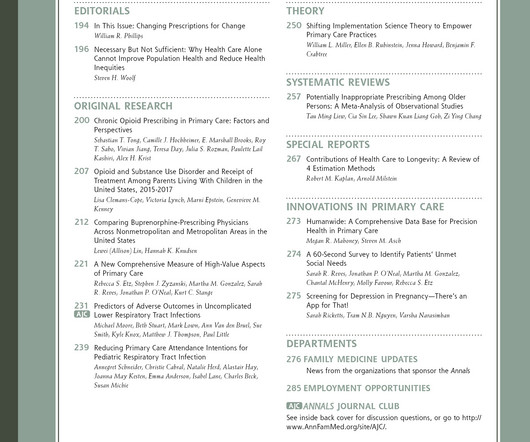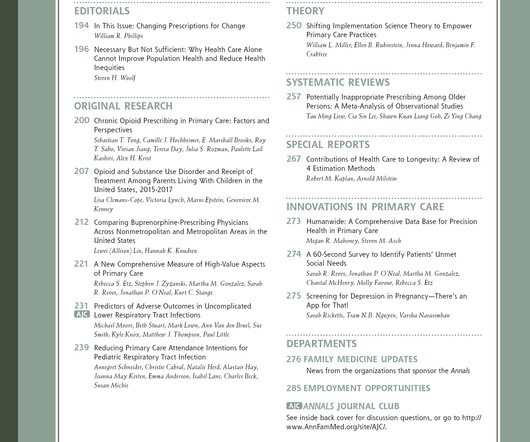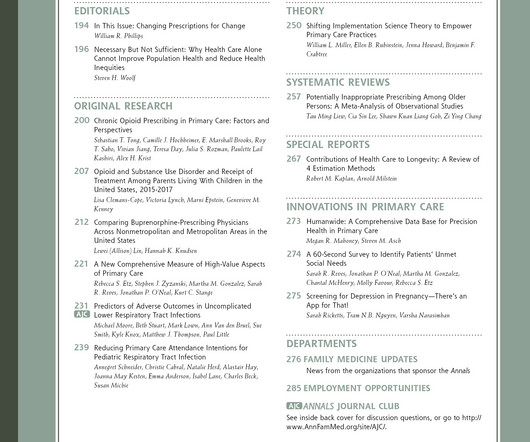Addressing diabetes management in the context of social needs: a qualitative study of primary care providers [Diabetes and endocrine disease]
Annals of Family Medicine
NOVEMBER 20, 2024
A recent review of national diabetes treatment guidelines recommended adjustments to DM to reduce financial strain (eg, selecting lower cost medications), as well as directly intervening in response to an identified social need (eg, referral to a community-based service). Outcome Measure: Themes that emerged from interviews.















Let's personalize your content